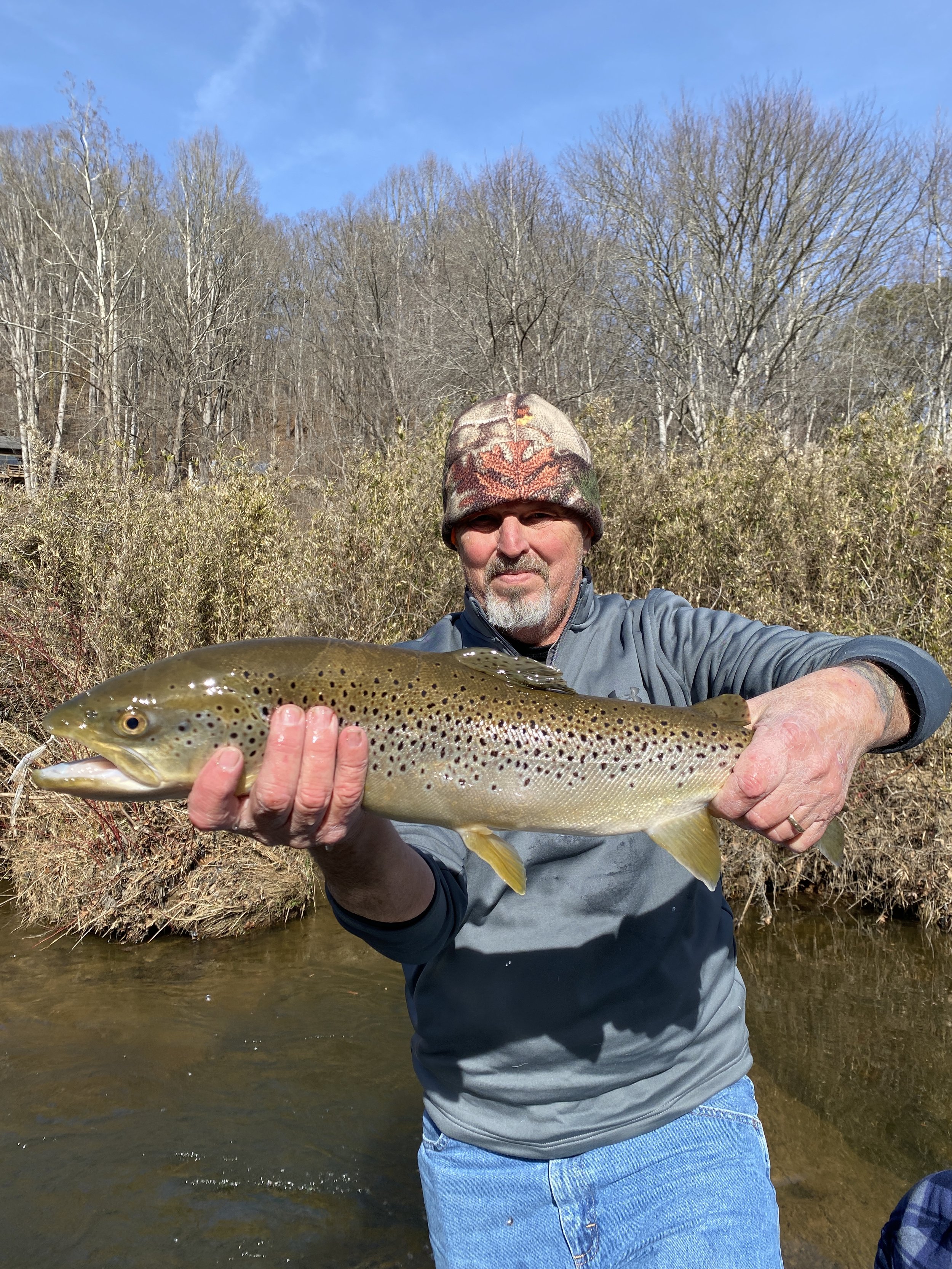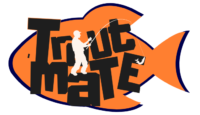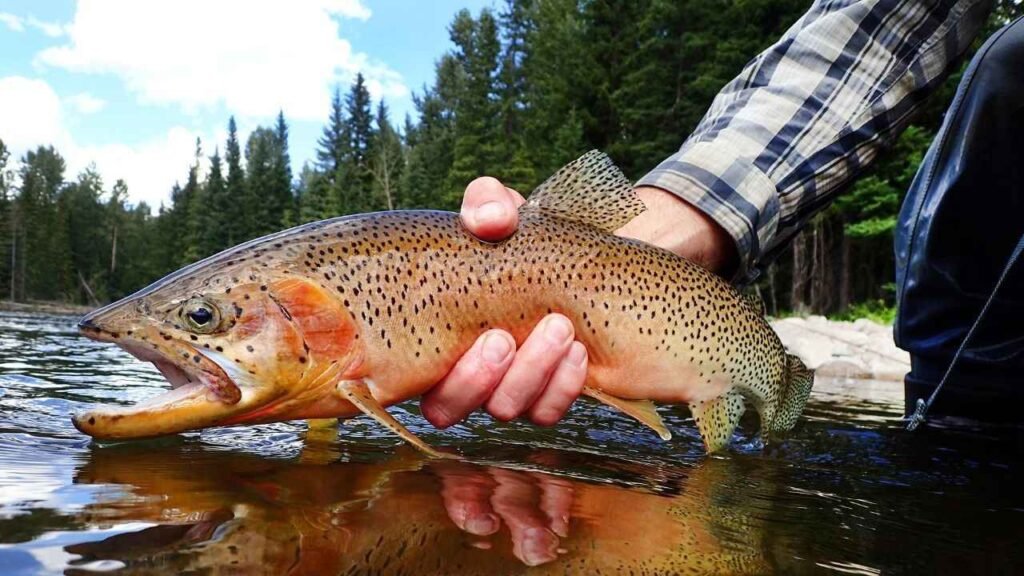April through June and September through October are the best months for trout fishing. These periods offer ideal water temperatures.
Trout fishing enthusiasts know that timing is crucial for a successful catch. During spring, from April to June, the water temperatures rise, making trout more active. This period also coincides with the hatching of many insects, providing ample food for the fish.
In fall, from September to October, trout are preparing for winter and are more aggressive in their feeding habits. Cooler temperatures and fewer anglers make these months perfect for a peaceful fishing experience. Whether you prefer streams, rivers, or lakes, targeting these months can significantly increase your chances of a bountiful trout fishing adventure.
Spring Start
Trout fishing enthusiasts eagerly await the start of spring. The season brings new life and opportunities to catch trout. The warmer weather and melting snow make spring an ideal time to fish.
Early Spring
Early spring is a magical time for trout fishing. The water starts to warm up, making trout more active. Anglers find that trout move closer to the surface. This makes them easier to catch.
During this period, focus on using bright and flashy lures. These attract the trout’s attention. Also, consider fishing in shallow waters. The sun warms these areas faster, drawing trout in.
Early spring can be unpredictable. Be prepared for sudden weather changes. Always bring a variety of lures and baits. This increases your chances of success.
Late Spring
Late spring offers even better conditions for trout fishing. The water temperature becomes more stable. Trout are more predictable and easier to locate.
Focus on fishing during early morning or late evening. Trout feed more actively during these times. Use natural bait like worms or insects. These are more effective in attracting trout.
In late spring, consider fishing in deeper waters. As the days get warmer, trout seek cooler depths. Use weighted lures to reach these areas.
Here’s a simple table to summarize the best strategies for early and late spring trout fishing:
| Time of Spring | Water Temperature | Best Baits/Lures | Best Locations |
|---|---|---|---|
| Early Spring | Cold, warming up | Bright, flashy lures | Shallow waters |
| Late Spring | More stable | Natural baits | Deeper waters |
Understanding these changes can make a big difference. Adapt your strategy to the season for a successful trout fishing experience.
Summer Strategies
Trout fishing in the summer can be challenging due to the hot weather. Fish tend to seek cooler waters, making it crucial to adjust your strategies. Here are some effective summer strategies for successful trout fishing.
Hot Weather Tips
During hot summer months, trout often move to deeper, cooler waters. Here are some tips to increase your chances:
- Fish early morning or late evening: Trout are more active during these cooler parts of the day.
- Seek shaded areas: Look for spots under trees or near overhanging banks.
- Use smaller lures: Trout eat smaller prey in the summer, so adjust your bait size.
- Stay hydrated: Bring plenty of water for yourself to stay cool and safe.
Best Times Of Day
Fishing at the right time can make a huge difference in your success rate. Here are the best times to fish for trout in the summer:
| Time of Day | Reason |
|---|---|
| Early Morning | Cooler water and higher oxygen levels |
| Late Evening | Lower temperatures and increased trout activity |
Fishing during these times increases the likelihood of catching trout. They are more active when the water is cooler and oxygen levels are higher.
By following these summer strategies, you can enjoy a successful trout fishing experience even in hot weather.
Fall Finale
The fall season offers some of the best trout fishing opportunities. As the temperatures cool, trout become more active and easier to catch. This period, often referred to as the “Fall Finale,” is a favorite among anglers.
Pre-spawn Period
During the pre-spawn period, trout prepare for breeding. They become more aggressive and feed heavily, making them easier to catch. This period usually occurs from late September through November.
Here are some key factors that make this time ideal:
- Increased trout activity: They move more to find food.
- Aggressive feeding: Trout eat more to gain energy for spawning.
- Easier to locate: They gather in specific areas, making them easier to find.
Cooler Waters
Cooler waters in fall create perfect conditions for trout. The water temperature drops, which makes trout more comfortable and active.
Benefits of cooler waters include:
- Higher oxygen levels: Cooler water holds more oxygen, benefiting trout.
- Reduced stress: Trout feel less stressed, increasing their activity.
- Better feeding conditions: More insects and smaller fish are available.
| Month | Water Temperature | Trout Activity Level |
|---|---|---|
| September | 60-65°F | High |
| October | 55-60°F | Very High |
| November | 50-55°F | High |
These months offer the best combination of conditions for trout fishing. The Fall Finale is truly a magical time for anglers.
Winter Wonders
Trout fishing in winter offers a unique thrill. Cold months bring different fishing techniques. Some spots remain mild, while others freeze. Let’s explore the winter wonders of trout fishing.
Mild Winter Spots
Not all places freeze during winter. Some areas stay mild and offer great fishing. Look for spots with warmer water. Spring-fed streams and tailwaters are good choices.
| Location | Water Type | Reason |
|---|---|---|
| Spring Creeks | Spring-fed | Stable temperatures |
| Tailwaters | Dam releases | Warmer water |
These spots can be productive in winter. Trout remain active due to the warmer water. Nymphs and streamers work well in these areas.
Ice Fishing Techniques
In colder regions, ice fishing becomes essential. Drilling holes in the ice is the first step. Use an auger for this.
Tip-ups and jigging rods are common tools. Tip-ups signal bites with a flag. Jigging rods require constant movement to attract trout.
- Choose the right spot.
- Drill a hole with an auger.
- Set up your tip-up or jigging rod.
- Use live bait or lures.
- Be patient and watch for bites.
Safety is crucial during ice fishing. Always check ice thickness. Wear proper gear to stay warm and safe. Here you get to know Trout Fly Fishing Techniques.
Regional Variations
Trout fishing can be a rewarding experience, but the best months for trout fishing can vary significantly based on the region. Understanding regional variations helps anglers maximize their success and enjoyment. Let’s delve into the specifics of different regions.
Mountain Streams
Mountain streams offer some of the best trout fishing opportunities. The peak months in mountain regions are typically June through September. The snowmelt feeds the streams, creating ideal conditions. During these months, trout are active and easier to catch. Early mornings and late evenings are prime times.
- June: Snowmelt increases stream flow, making it ideal for trout.
- July: Water temperatures are perfect, and trout are highly active.
- August: Consistent water levels and active trout make for excellent fishing.
- September: Cooler temperatures start to return, maintaining trout activity.
These months are particularly fruitful in the Rocky Mountains, the Appalachians, and the Sierra Nevada. High altitudes keep the water cool, which is perfect for trout.
Coastal Areas
Coastal areas present a different scenario for trout fishing. Here, the best months are usually March through May and September through November. During these periods, water temperatures are optimal, and trout are more active. This is especially true in regions like the Pacific Northwest and the Northeastern U.S.
| Month | Reason |
|---|---|
| March | Spring temperatures begin to rise, increasing trout activity. |
| April | Perfect water temperatures and abundant food sources. |
| May | Stable weather and high trout activity levels. |
| September | Cooling temperatures reinvigorate trout. |
| October | Consistent water conditions and active trout. |
| November | Trout prepare for winter, increasing feeding activity. |
Whether you’re fishing in mountain streams or coastal areas, understanding these regional variations can significantly enhance your trout fishing experience.

Credit: drifthook.com
Gear And Tackle
Fishing for trout requires the right gear and tackle. The best equipment can make your fishing experience enjoyable and successful. Each season offers unique challenges and opportunities. Therefore, the gear and tackle you use should adapt accordingly.
Seasonal Gear
Each season demands different gear to ensure a great catch. Below is a quick guide:
| Season | Essential Gear |
|---|---|
| Spring | Lightweight rods, breathable waders, polarized sunglasses |
| Summer | Sun protection, water-resistant boots, cooling towels |
| Fall | Insulated jackets, waterproof gloves, thermal socks |
| Winter | Heavy-duty rods, ice fishing shelters, hand warmers |
Bait And Lures
Choosing the right bait and lures is crucial. Here are some recommendations for each season:
- Spring: Worms, minnows, small jigs
- Summer: Crickets, grasshoppers, dry flies
- Fall: Streamers, spinners, eggs
- Winter: Ice jigs, wax worms, power bait
These options will increase your chances of landing a big trout. Always carry a variety of baits and lures to adapt to changing conditions. Choose your Top 10 Best Fishing Lures to Boost Your Catch Rate.
Weather Impact
Understanding the weather impact on trout fishing can significantly improve your success rate. Weather conditions directly influence trout behavior, feeding patterns, and habitat preferences. By knowing how different weather elements affect trout, you can plan your fishing trips effectively.
Rainy Seasons
Rainy seasons can be a boon for trout fishing. Rain increases water levels, creating more oxygen and making trout more active. The rain washes insects into the water, providing a natural food source for trout. The runoff can also make the water murky, which helps to conceal you from the fish.
During rainy seasons, try using brightly colored lures. These stand out in the murky water. Fish near inlets and outlets where water flow is stronger. Trout are more likely to be found here due to the increased food supply.
Temperature Fluctuations
Temperature plays a crucial role in trout fishing. Trout prefer cooler water temperatures, generally between 50°F and 60°F. During the summer, they tend to move to deeper, cooler waters. In the winter, they are less active and stay in warmer, shallow areas.
Using a thermometer can help you find the optimal fishing spots. Fish early in the morning or late in the evening during hot months. The water is cooler at these times, making trout more active and easier to catch.
Below is a table summarizing the best temperatures for trout fishing:
| Season | Optimal Temperature | Fishing Time |
|---|---|---|
| Spring | 50°F – 60°F | All Day |
| Summer | 60°F – 70°F | Morning & Evening |
| Fall | 50°F – 60°F | All Day |
| Winter | 40°F – 50°F | Midday |

Credit: www.thecatawbaangler.com
Conservation Tips
Trout fishing is a beloved pastime for many anglers. It’s crucial to practice conservation to ensure trout populations thrive. Below are some essential conservation tips to keep in mind.
Catch And Release
Catch and release is a common practice in trout fishing. It helps maintain healthy populations. Here are some guidelines to follow:
- Use barbless hooks to minimize injury.
- Handle trout with wet hands to protect their slime layer.
- Keep the trout in the water as much as possible.
- Release the fish gently back into the water.
Sustainable Practices
Sustainable fishing practices ensure the future of trout fishing. Implement these practices to contribute positively:
- Follow local fishing regulations and limits.
- Use environmentally friendly fishing gear.
- Dispose of fishing lines and hooks properly.
- Participate in habitat restoration projects.
By following these conservation tips, you help preserve trout populations. Your actions make a difference in sustaining this beloved sport.

Credit: whiteriverfishingguides.com
Spring and fall are prime trout fishing months. Cooler temperatures and active trout make these seasons ideal. Plan your trip during these periods for the best experience. Don’t forget to check local regulations and conditions. Happy fishing, and may your lines always be tight!
FAQs:
What Is The Best Time Of Year To Catch Trout?
The best time to catch trout is in spring and fall. Trout are more active in cooler water temperatures. Early morning and late evening are ideal times.
What Months Are Best For Lake Trout Fishing?
The best months for lake trout fishing are May through September. Early summer offers prime conditions. Late spring and fall can also be productive.
Do Trout Go Deep Or Shallow In Winter?
Trout often go deeper in winter. They seek warmer water and more stable temperatures found in deeper areas.
What States Have Trout Seasons?
Trout seasons exist in many states, including California, Colorado, Montana, New York, Pennsylvania, and Michigan. Regulations vary by state.



